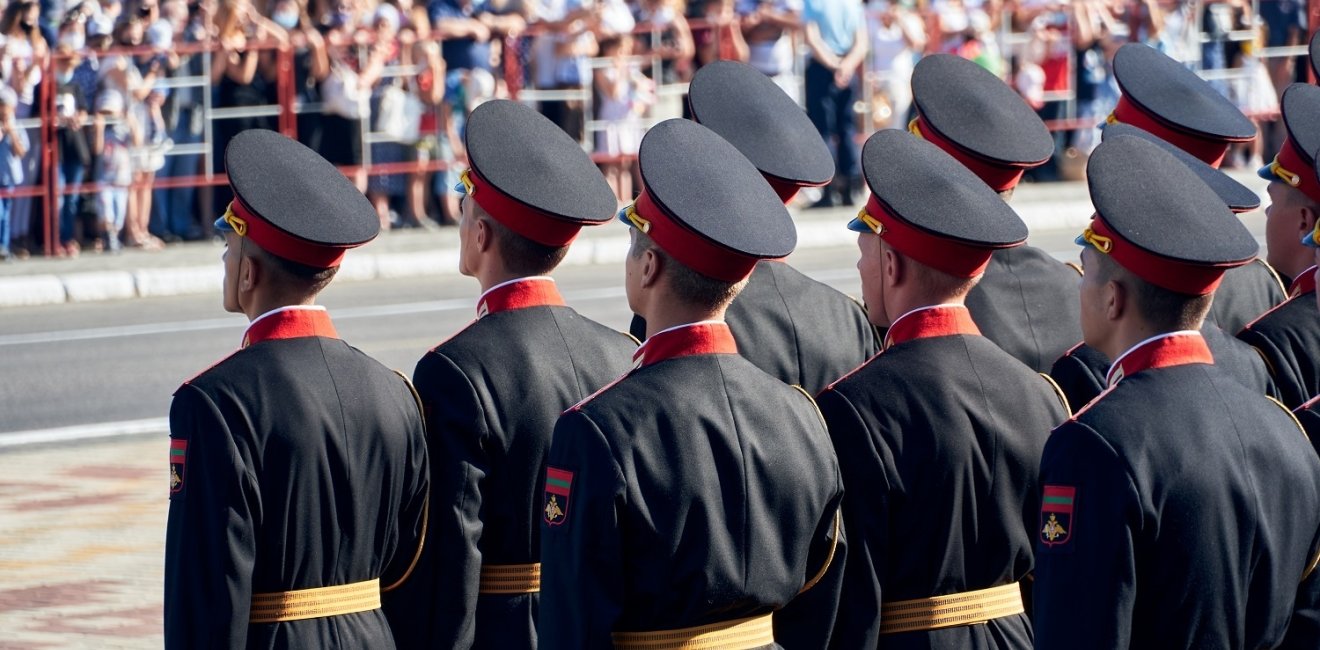
A blog of the Kennan Institute
BY TETYANA MALYARENKO AND STEFAN WOLFF
The protracted conflicts across the post-Soviet space have returned to the center of regional and international politics over the past several months. First it was the military escalation between Azerbaijan and Armenia over Nagorno-Karabakh, then the prospect of a new push to settle the conflict over Transnistria in the aftermath of the November Moldovan presidential elections, in which the EU-oriented economist Maia Sandu won against Igor Dodon, the Kremlin-backed incumbent.
While these two events were making global headlines, equally important conflicts in Ukraine and Georgia were relegated to the background. Ukraine still experiences almost daily ceasefire violations, with last month’s peak of almost 100 episodes recorded on November 13. In Georgia, severe restriction of freedom of movement across the lines of conflict with Abkhazia and South Ossetia, including border detentions, has exacerbated the humanitarian crisis unfolding in the region.
A closer look at two of these conflicts, the one in Moldova over Transnistria and Ukraine’s ongoing shooting war with Russia-backed insurgents in the Donbas, reveals a number of important similarities and differences. In both cases, the conflict has settled into a relatively stable status quo. The levels of violence in the Donbas are still significant, though not on the scale of the violence in 2014 and 2015 or during the reescalation in the first three months of 2017 and in May 2018, when monthly explosions on both sides of the conflict line with Donetsk topped 20,000 and 10,000, respectively.
In both cases, the prospects for Kyiv and Chisinau to achieve their preferred goal of reintegration of the separatist regions are limited. Citing the importance of geopolitics, both the incumbent and incoming Moldovan presidents have declared that restoring the country’s territorial integrity and reintegrating Transnistria is among their top priorities, although they disagree on how to craft a settlement. In the Moldovan case, moreover, reintegration is mostly a political and security issue as both parts of the country are very well integrated economically and socially. Even the cultural differences between people on both banks of the Dniester river concerning identity, language, and preferences for closer ties with Russia or the West are not as pronounced as is often assumed and are reflected in Moldovan society as a whole. This was evident, again, in the presidential election results, showing an almost even split in Moldova (without the diaspora vote) between Sandu’s supposedly pro-European supporters and Dodon’s supposedly pro-Russian supporters.
In reality, therefore, few incentives exist either in Chisinau or in Tiraspol to push for a settlement that would upset the existing, and apparently comfortable, status quo. There are even fewer incentives, and no public support, to push for a military “solution,” not least because of the disastrous consequences of just such a solution in Georgia in 2008 or in Nagorno-Karabakh earlier this fall.
By contrast, in Ukraine, neither Kyiv nor Donetsk and Luhansk are content with the status quo in their conflict. Moreover, neither side has given up on the idea of eventually winning the conflict by military force. There is not even a rhetorical commitment to meaningful negotiations over reintegration on the part of the leaders of the self-declared People’s Republic of Donetsk (DPR) or People’s Republic of Luhansk (LPR). At the same time, the share of the Ukrainian population supporting reintegration by force of Donetsk and Luhansk oblasts has increased from 20 percent in 2019 to 30 percent in 2020.
The apparent success of Azerbaijan in reintegrating Nagorno-Karabakh by force has raised a worrisome enthusiasm in the Ukrainian expert and media community, who project a similar sort of Baku “victory” onto the Donbas and Crimea. Not only is this a misreading of the outcome on the ground in Nagorno-Karabakh, it also obscures that the main beneficiary of the new status quo is in fact Russia: Azerbaijan may have regained some territory, but large parts of Nagorno-Karabakh and the strategically important Lachin corridor are now protected by Russian peacekeepers for an essentially open-ended period of time.
Neither Kyiv nor the Russia-backed rebels currently occupying parts of the Donbas appear committed to negotiating reintegration. In fact, the strengthening of their respective military capabilities makes the already fragile ceasefire even more susceptible to collapse than at any time since the escalation in the spring of 2018. Two factors, however, may keep the conflict from escalating.
The first is a sober assessment, in light of Georgia’s 2008 experiences and the difference between Ukraine and Russia in their military capabilities, that the likely result of a military campaign would be highly disadvantageous for Kyiv. The Kremlin has repeatedly warned Ukraine that it will respond with force should Kyiv try to reintegrate Donetsk and Luhansk militarily. Such warnings have included, most recently, comments by President Putin about a possible recognition of the DPR and the LPR. Short of such Georgia-style recognition, Russian analysts have also considered a Karabakh-style deployment of Russian “peacekeepers,” something that has also significantly contributed to the stable but unresolved conflict in Transnistria. Neither outcome would, thus, be in Kyiv’s interests.
Second, the policy of the EU, driven, in particular, by Germany and France, keeps Ukraine within the Normandy and Minsk formats as an alternative to military escalation. The outcomes of either process are limited and more likely to cement the status quo through managing crises and addressing humanitarian issues, but they also make it more difficult for any temporary escalation of violence to get out of control.
What makes the close comparison of the conflicts over Transnistria and the Donbas even more relevant is the fact that the EU plays a much more active role in these regions and has significantly more leverage than it does in either Nagorno-Karabakh or, arguably, Georgia. The EU’s engagement, of course, is driven by its own interests for a secure and stable neighborhood that is broadly aligned with its own norms and kept out of Russia’s orbit. This explains, in part, why “freezing” the conflict over the Donbas in a status similar to Transnistria’s is not seen as the worst possible outcome from the EU’s perspective.
The conflicts over Transnistria and the Donbas are closely linked in several additional, non-obvious ways. Moldova needs Ukraine’s cooperation to maintain the effectiveness of the EU Border Assistance Mission (EUBAM) along the Transnistrian segment of the Ukraine-Moldova border. And if Chisinau ever wanted to put serious pressure on Tiraspol, Kyiv’s support would be indispensable. While Kyiv is vulnerable to pressure from Moscow via Russia’s presence in the Donbas, Transnistria presents the Kremlin with additional significant leverage over both Ukraine and Moldova. All three countries are, therefore, locked in a dynamic that requires careful balancing acts.
Both Putin and Sandu have emphasized their desire for constructive and pragmatic dialogue, including on Transnistria. However, Sandu’s subsequent interview with Ukraine’s Pravda sets out her agenda by emphasizing the differences in her approach from that of her predecessor. Focusing on the withdrawal of Russian troops, in itself not at all illegitimate, was seized upon by Dodon as evidence of the incoming president’s anti-Russian stance. Rejecting the federalization of Transnistria, Sandu also criticized Dodon for failing to provide any concrete proposals for Transnistria’s reintegration. With Dodon’s Socialists still in control of the government and therefore more powerful than the relatively weak presidency, this is likely to undermine any potential for a broader, bipartisan consensus on a viable approach to conflict settlement in Moldova and has broader repercussions for political stability in the country.
Likewise, Sandu’s assertion that the “soft” reintegration of Transnistria into Moldova had failed to fully restore the country’s sovereignty and territorial integrity is certainly correct. Yet in the absence of viable alternatives and the risks associated with a more hard-line approach, soft integration may remain the more promising approach for both Chisinau and Kyiv, as well as for their Western partners. This is not to suggest that Moldova or Ukraine acquiesce to Moscow’s support for separatists in either Transnistria or the Donbas but rather that they recognize that politics remains the art of the possible, and not necessarily of the desirable.
The opinions expressed in this article are those solely of the author and do not reflect the views of the Kennan Institute.
Authors


Professor of International Security at the University of Birmingham

Kennan Institute
After more than 50 years as a vital part of the Wilson Center legacy, the Kennan Institute has become an independent think tank. You can find the current website for the Kennan Institute at kennaninstitute.org. Please look for future announcements about partnership activities between the Wilson Center and the Kennan Institute at Wilson Center Press Room. The Kennan Institute is the premier US center for advanced research on Eurasia and the oldest and largest regional program at the Woodrow Wilson International Center for Scholars. The Kennan Institute is committed to improving American understanding of Russia, Ukraine, Central Asia, the South Caucasus, and the surrounding region through research and exchange. Read more

Explore More in Focus Ukraine
Browse Focus Ukraine
Talking to the Dead to Heal the Living

Ukrainian Issue in Polish Elections


